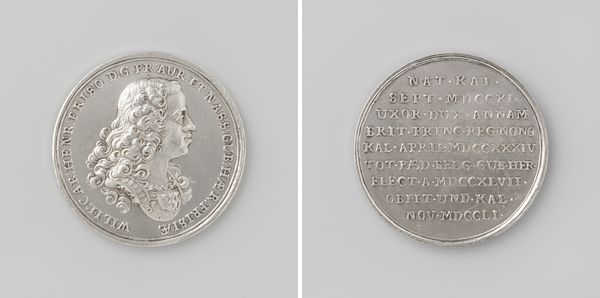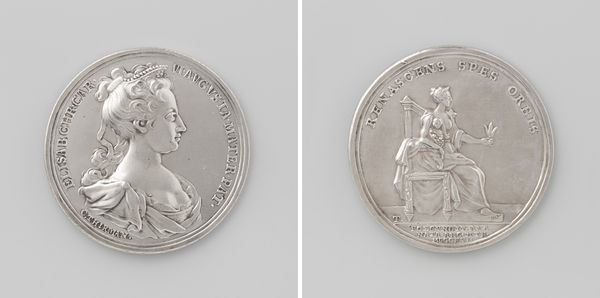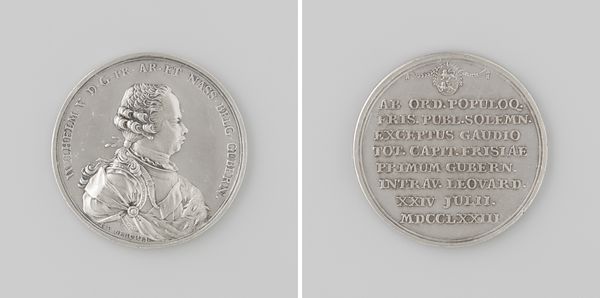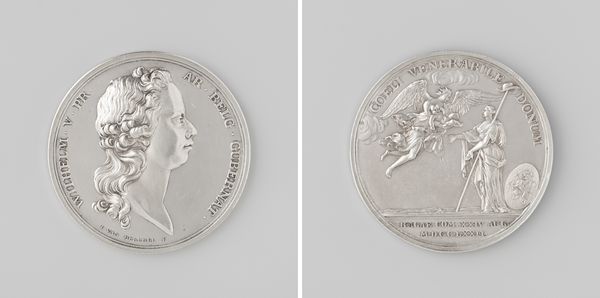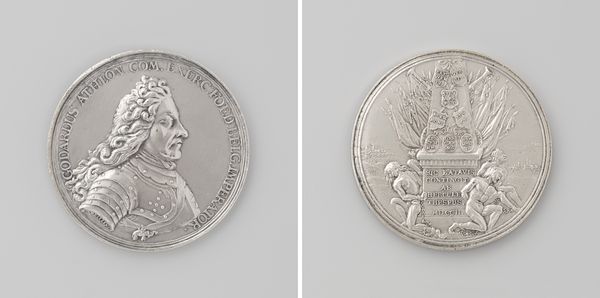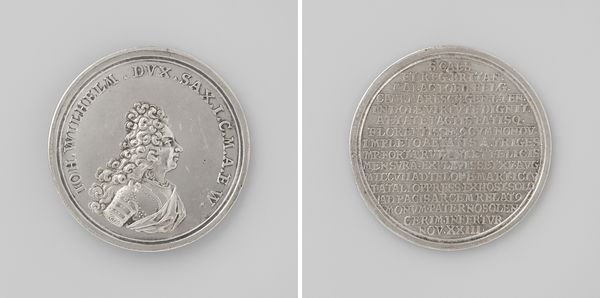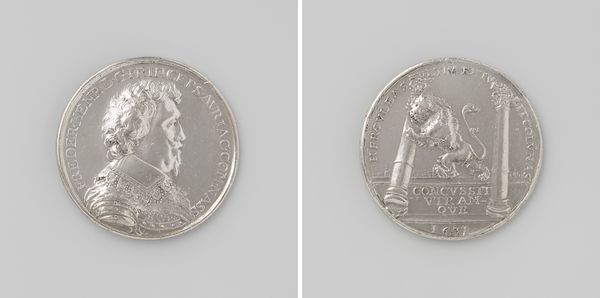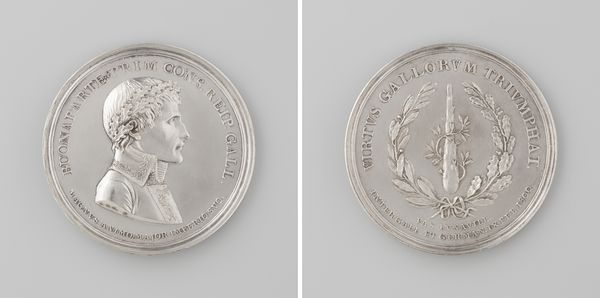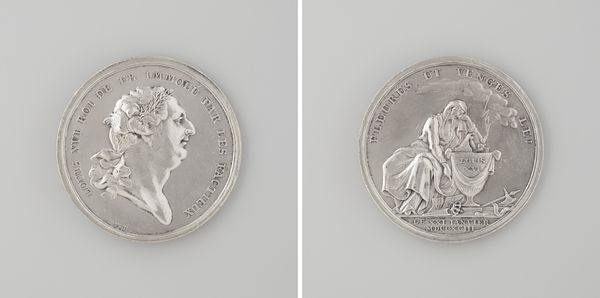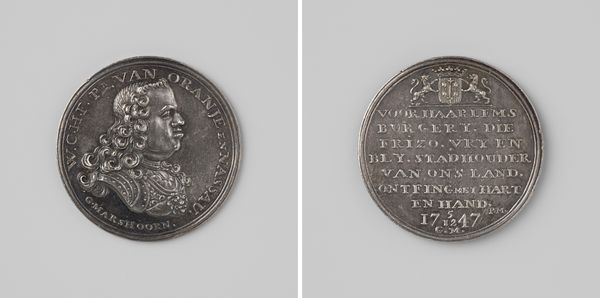
metal, relief, sculpture
#
portrait
#
neoclacissism
#
metal
#
relief
#
sculpture
#
history-painting
Dimensions: diameter 5 cm, weight 62.52 gr
Copyright: Rijks Museum: Open Domain
Editor: This is a relief sculpture medal from 1816 by Joseph-Pierre Braemt. It commemorates the Royal Academy of Science and Letters in Brussels, made of metal. The precision of the lines feels really impressive; it’s amazing this level of detail can be achieved on something so small. How would you read this work? Curator: Well, consider the materials. Metal isn't just a neutral medium; it signifies power, currency, permanence. The act of minting this medal, replicating it, disseminating it - that’s about controlling narrative. It connects directly to systems of patronage and knowledge production. How did Braemt acquire the skills and tools to shape the material? Who funded the creation and distribution of these medals? Editor: So, the value of the medal goes beyond just the image or what it represents. It's in how it was made and who was involved. I’d assumed its purpose was purely celebratory. Curator: It IS celebratory, but celebration serves a function. Commemorating the academy serves to legitimize its knowledge. The medal's design and its material composition reinforces this authority. Look at the figure represented. Who benefits from his portrayal on this object circulated throughout the land? What statement does that make? Editor: I never thought of it in that way. I was mostly focusing on the aesthetics, like how shiny the metal is, but that ignores everything about the socioeconomic and political context of its creation and distribution. Thanks! Curator: Exactly! It's a constant interplay between aesthetics, materials, and the social forces that give them meaning. Examining these connections reveals power dynamics that are often hidden in plain sight.
Comments
No comments
Be the first to comment and join the conversation on the ultimate creative platform.
